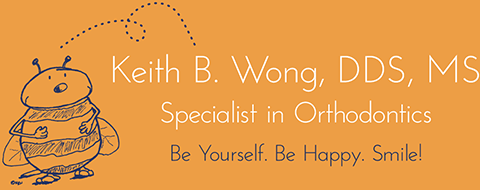When to Visit an Orthodontist: Children and Adults
Children
The American Association of Orthodontists recommends that all children be examined by an orthodontist at age seven. At this age, the first permanent molars and some permanent incisors will have erupted and the budding occlusion and dentofacial relationships should be evaluated. If first molars have yet to erupt, an examination is recommended to assess any developmental issue.
It is important that progress of the unerupted permanent teeth, and particularly those between molars and incisors, be evaluated since eruption in the cuspid/bi-cuspid area is sequential and, often, simple recognition and recommendation by the orthodontist of strategic removal of a primary (“baby”) tooth can avert significant misalignment of permanent teeth.
Although orthodontic treatment is generally not indicated at age seven, it is very helpful to assess the development of the dentition and facial bones in order to determine whether the child would benefit from interceptive correction of any imbalances before they become pronounced. Early correction of developmental issues (usually starting around age nine) leads to more successful, less invasive treatment once the permanent teeth erupt; in some cases, there is, as a result, no need for comprehensive treatment.
Given that most orthodontists offer complimentary consultations and many developmental issues are subtle and invisible to the naked eye, it is highly recommended that all children are screened by an orthodontist. Fortunately, there are several qualified and experienced orthodontists in the Seattle area, including myself. I encourage you to arrange for an examination of your child by one or more of these specialists.
Adults
For adults, it is recommended that an orthodontist be seen whenever there are questions concerning smile aesthetics, tooth alignment, and/or the stability of occlusion (bite). In addition to cosmetic issues, the adult patient may experience accelerated wear or breakage of teeth due to misalignment.
A thorough and responsible primary care dentist will screen for issues related to malocclusion and refer the patient to an orthodontist for evaluation to determine if tooth movement, rather than tooth removal, sculpting, or simply whitening, will best alleviate the issue in the context of long term health. The breaking of teeth when chewing, for example, may indicate that orthodontic treatment is warranted.
A consultation with a qualified orthodontist is an opportunity to have questions answered and gain a comprehensive understanding of tooth alignment relative to bite, smile, gums, bones, and face (presently and over time) and to learn of available options before committing to either no treatment or to changes in the teeth themselves. As stated above, orthodontic examinations are performed free of charge by most practitioners; consequently, if questions arise, I encourage you to seek one or more such examinations from reputable orthodontic specialists.
